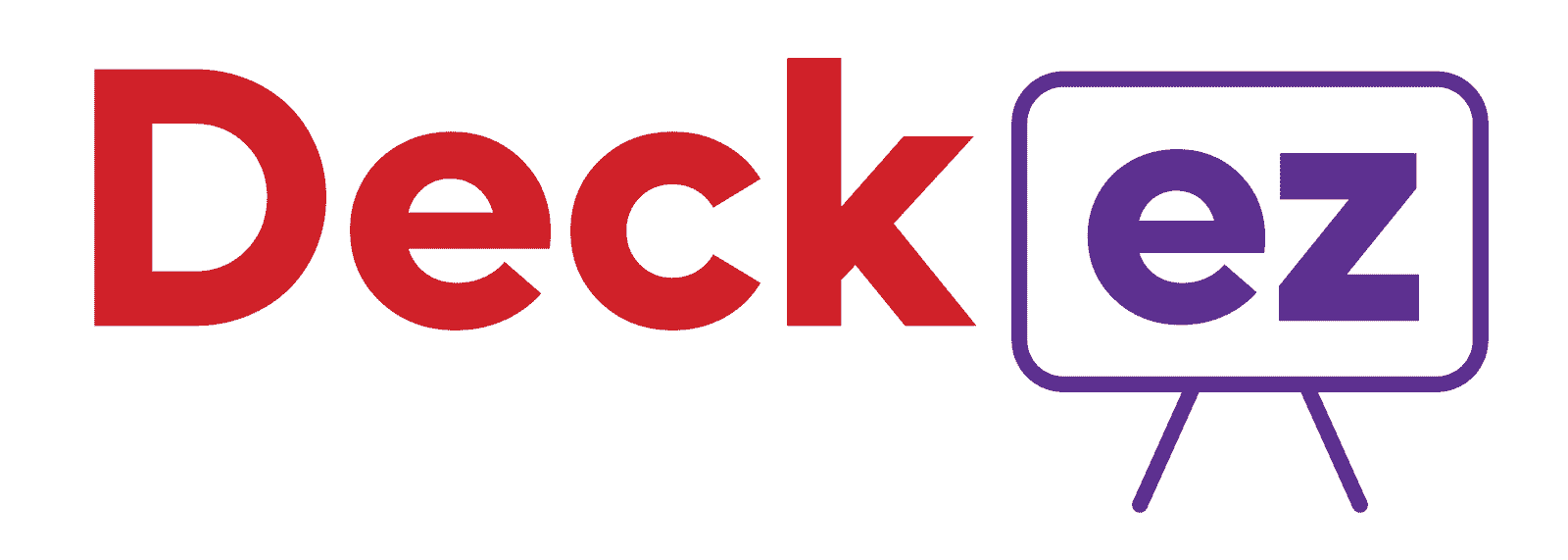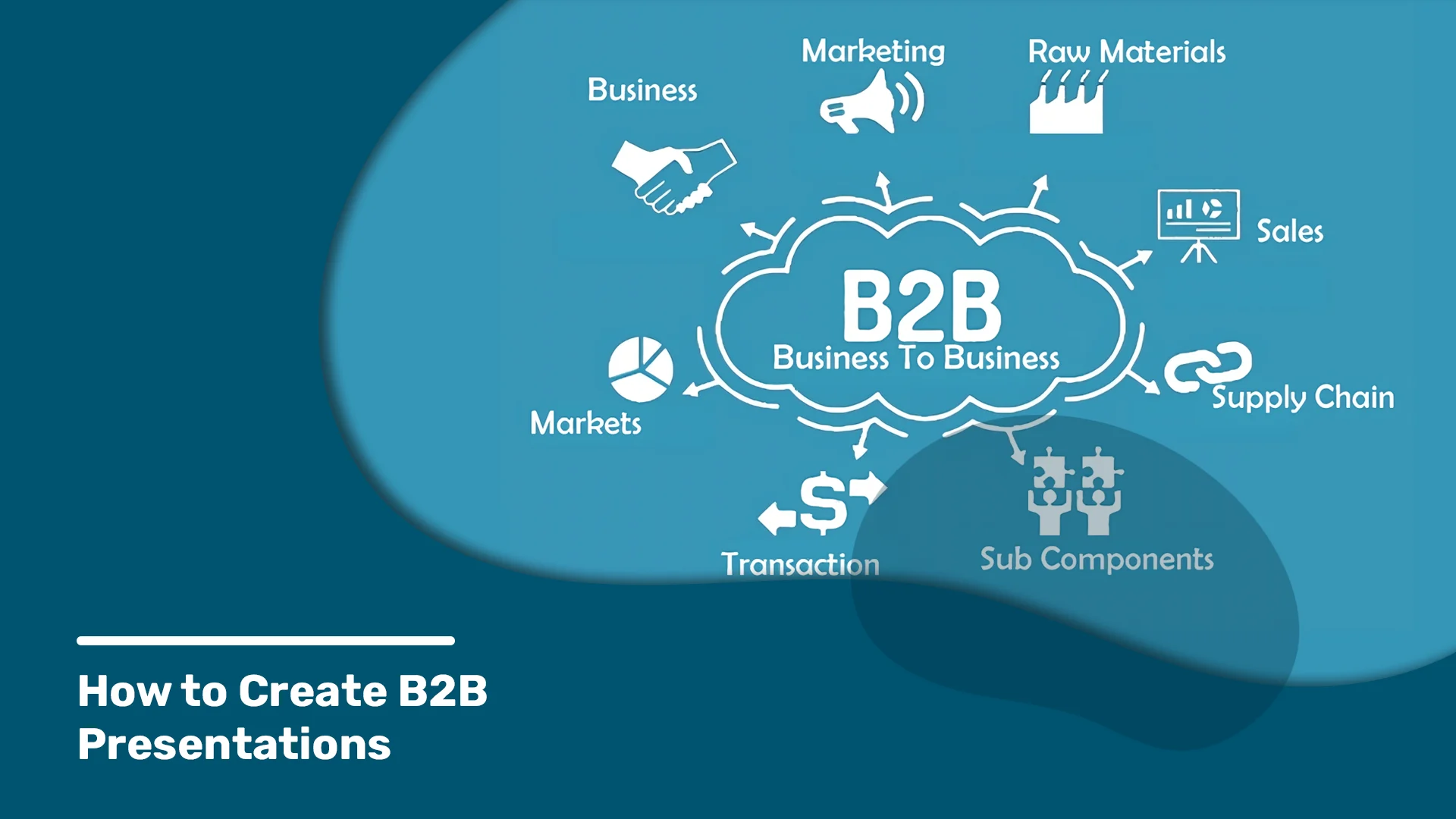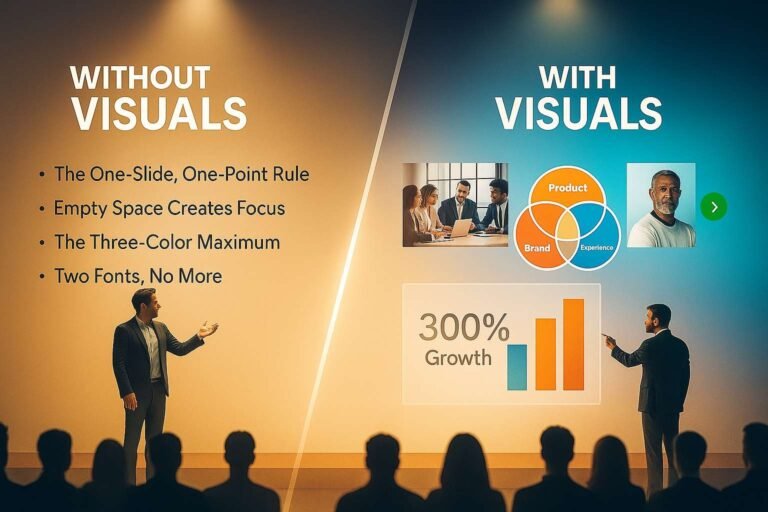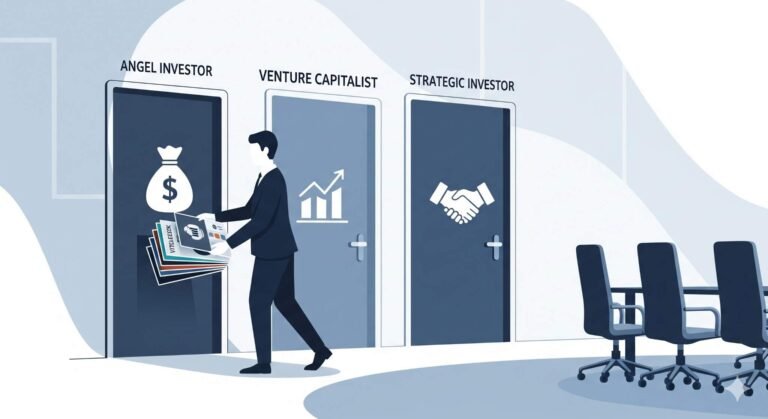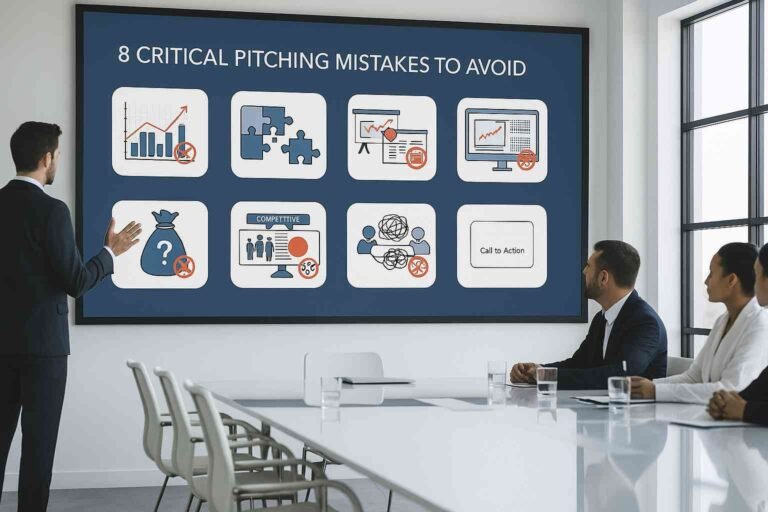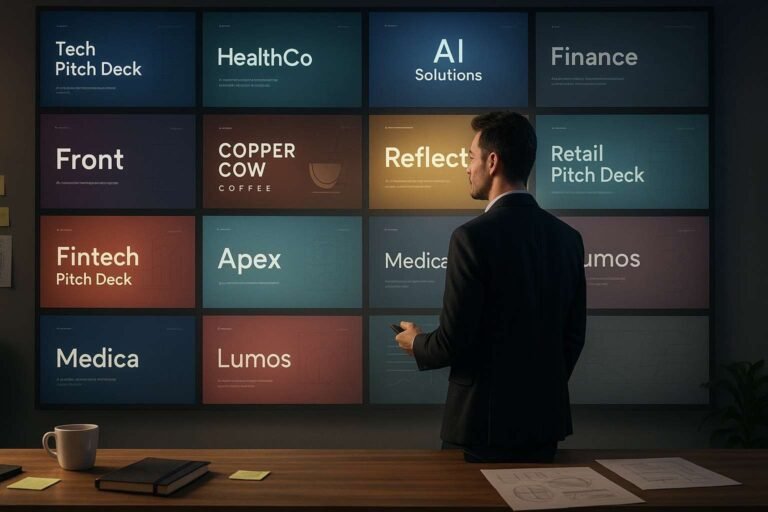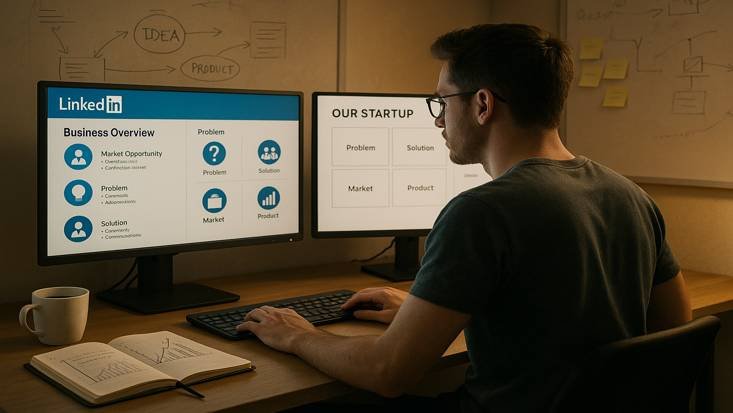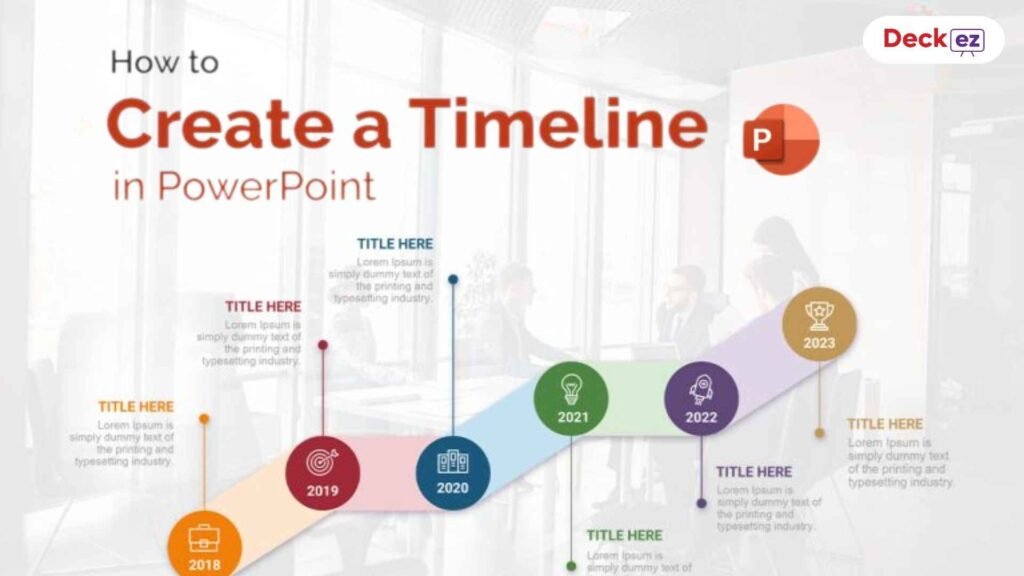Introduction
Have you ever tried telling a story but noticed people stopped listening halfway? That happens in business too. In B2B meetings, you often get just 10 minutes to prove your value. A strong presentation works like a bridge — it connects your ideas to decision-makers and shows why your solution matters.
The problem is that many businesses know their product well but struggle to explain it clearly on slides. The result? Boring decks that lose attention. The good news: with the right approach, you can create slides that are short, neat, and powerful.
💡 Want to see how design can help? Read our blog: Why Your Slides Still Matter in the Age of AI: A Designer’s Perspective.
What is B2B Presentation?
A B2B presentation is a structured way of showing your company’s ideas, products, or services to other businesses. Unlike consumer-focused talks, B2B presentations highlight data, ROI, efficiency, and value because business clients make decisions based on proof and strategy, not just emotions.
In simple words, a B2B presentation is your chance to:
- Explain how your solution solves a company’s pain point
- Prove it with data, examples, and results
- Build trust with decision-makers
- Inspire them to take action — whether that’s signing a contract, investing, or starting a partnership
Step 1: Know Your Audience
Before you make a single slide, ask: Who will be in the room?
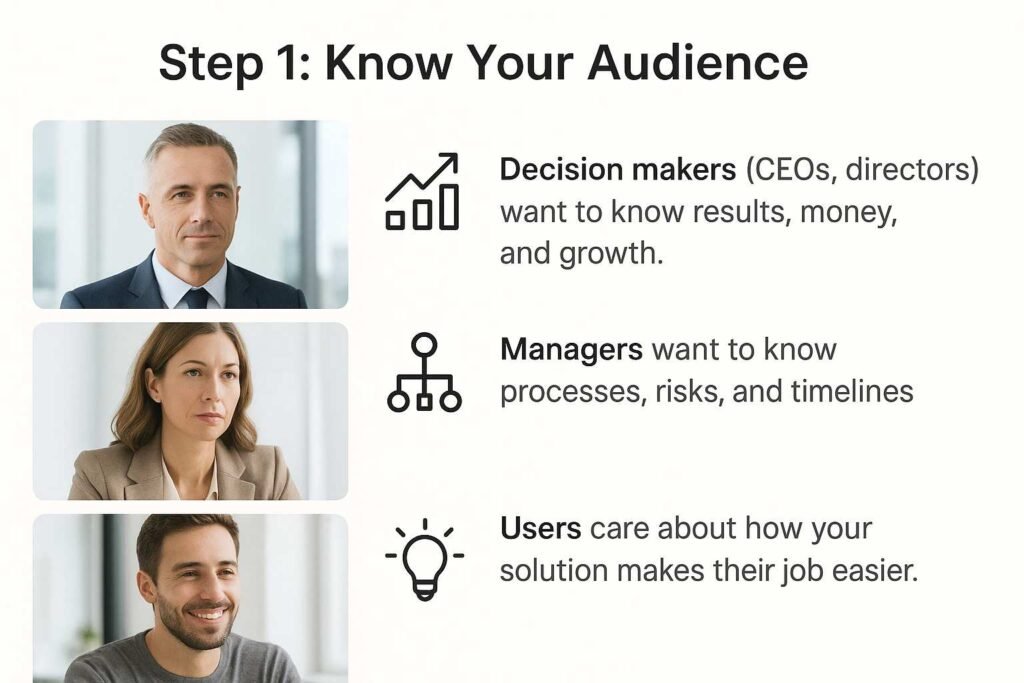
- Decision makers (CEOs, directors): want results, money, and growth.
- Managers: focus on process, risks, and timelines.
- Users: care about how your solution makes their job easier.
👉 Tip: Write down 3 questions each type of person may ask. Then shape your slides to answer them.
Step 2: Structure Your Slides Like a Story
A good B2B presentation is not a random list of facts. It’s a story. Follow this flow:

- Introduction – Why the meeting matters.
- Problem – Show the pain point with data/examples.
- Solution – Present your product as the answer.
- Market – Prove there’s room to grow with numbers.
- Business Model – Show how you make money.
- Team – Highlight expertise and trust.
- Financials – Add simple charts of growth.
- Call to Action – Ask clearly: Do you want investment, partnership, or a deal?
💡 Need examples of storytelling slides? Check out: Top Mistakes to Avoid in Presentations.
Step 3: Create Clear and Compelling Content
Your content is the heart of your deck.
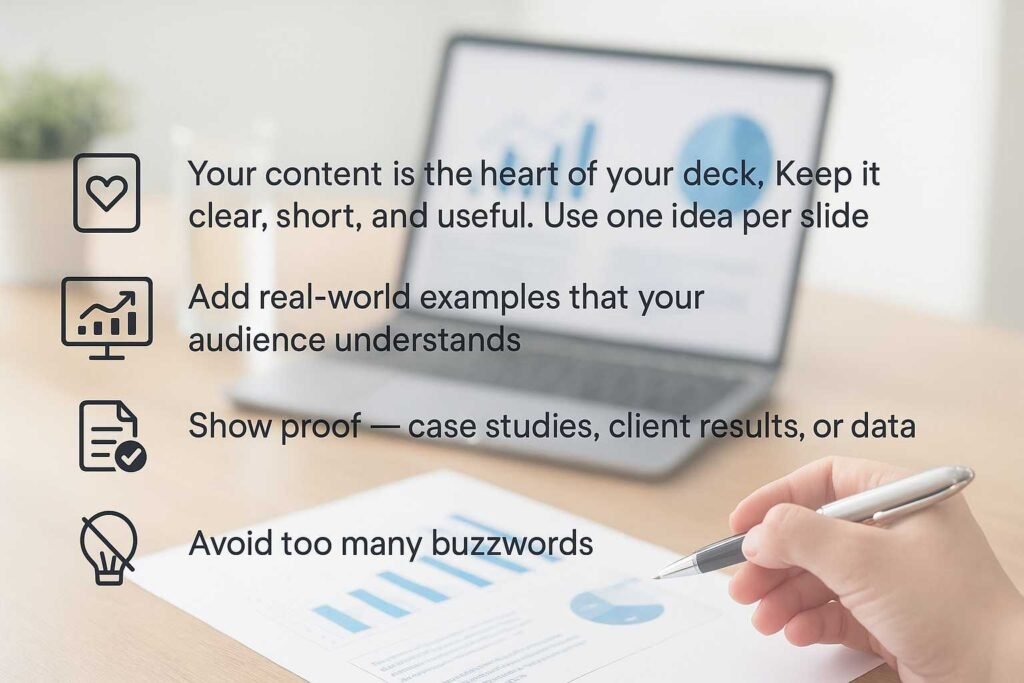
- One idea per slide → makes it simple.
- Add real-world examples your audience understands.
- Show proof (case studies, client results, data).
- Skip buzzwords. Keep it plain and strong.
👉 Example: Instead of “Our platform increases efficiency,” say:
“Our client cut response times from 5 hours to 30 minutes using our tool.”
Step 4: Design That Makes People Stay
Design is not decoration. It’s how your message sticks.
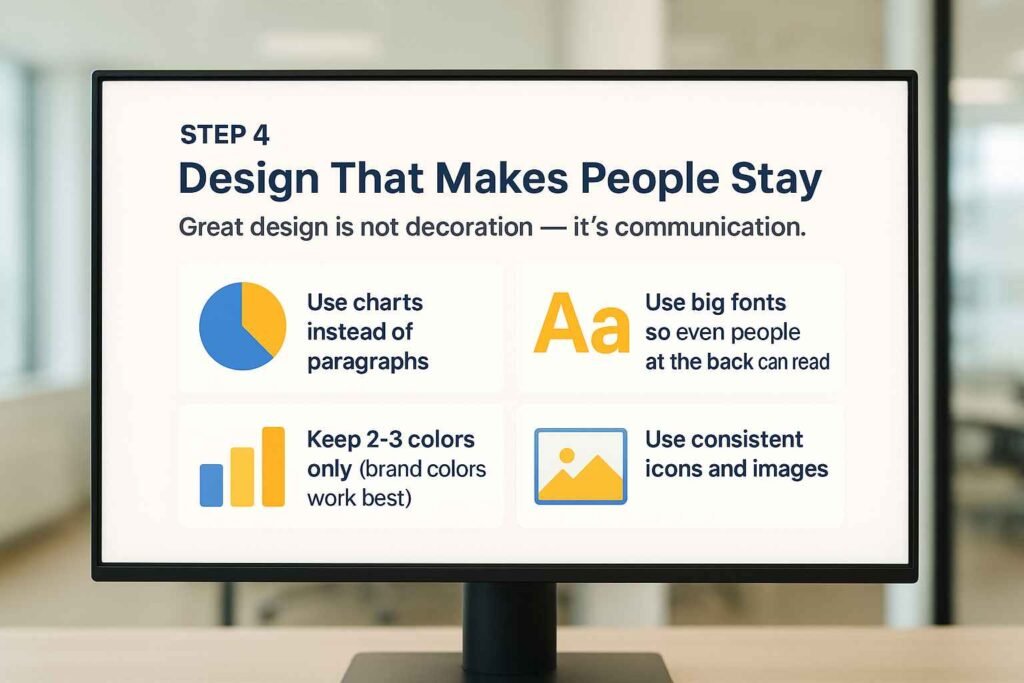
- Use charts instead of long text.
- Stick to 2–3 colors only (ideally brand colors).
- Use big fonts so even the back row can read.
- Add white space → it makes slides breathable.
- Keep icons and images consistent.
📊 Fact: Microsoft Research found that people lose focus in just 8 seconds if visuals are cluttered. Do you want to know more about presentation design? Check out our Top 5 Mistakes to Avoid in Presentation Design.
Step 5: Deliver With Confidence
Even the best slides fail if the speaker is nervous.

- Practice at least 3 times.
- Use a timer to stay within limits.
- Record yourself → check tone and body language.
- Note down answers for at least 5 tough questions.
👉 Tip: Smile and pause for 2 seconds after key points. It makes your words stronger.
Current Phase of B2B Market
Today’s B2B market is faster, digital-first, and more competitive than ever:
- Buyers expect clear value and fast ROI before committing
- Decisions often involve multiple stakeholders, not just one person
- Businesses prefer partners who offer data-driven insights rather than just products
- Presentations are often delivered in hybrid setups — part virtual, part in-person
This means your B2B presentation needs to be short, visual, and convincing while still being flexible across different platforms.
Future of B2B Market
The future is shifting toward:
- AI-powered personalization: Presentations tailored for each client automatically
- Real-time data: Dashboards and live analytics built into slides
- Interactive storytelling: Clickable elements, polls, and immersive experiences
- Sustainability focus: Investors and businesses will favor eco-conscious companies
- Global-first approach: Presentations must appeal across cultures and languages
👉 A B2B presentation of tomorrow won’t just “show slides.” It will engage, interact, and convince on multiple levels.
How You Can Improve Your B2B Presentation Style
If you want your deck to shine, focus on style as much as content:
- Simplify language – Use short sentences, easy words, and avoid jargon.
- Balance logic and emotion – Numbers prove your case, but stories connect hearts.
- Practice delivery – Stand tall, speak clearly, and use pauses effectively.
- Engage the room – Ask small questions, let them interact with your slides.
- Use modern tools – AI assistants, interactive templates, and custom designs.
Remember: the way you deliver can sometimes matter more than the slide itself.
Cost Comparison: In-House vs. Agency
| Option | Cost Range | Best For |
| DIY / In-house | $0 – $500 (time cost) | Small updates |
| Freelancer | $30 – $80/slide | Quick fixes |
| Agency | $1,500 – $6,000/deck | Big deals, investors |
💡Many companies prefer agencies for high-stakes presentations because design quality can decide the outcome. You might wonder: Why spend thousands on an agency when you could use a template or freelancer? Here’s why: Big meetings need strong slides. A design agency makes your slides clear, neat, and powerful. They don’t just make them look good — they also help you share your ideas in the right way. With one style and brand across all slides, people trust you more. You also save time and avoid stress. Even if it costs more, one good deal can cover that and give you much more back. In the end, hiring an agency is not just spending money — it’s a smart investment.
👉 In short: when the presentation can change your business path, an agency is not an expense — it’s an investment.
Case Study: How Deckez Helped Close a B2B Deal
A logistics startup wanted to pitch to a global retailer. Their slides were too text-heavy, with no visuals.
Here’s what Deckez did:
- Cut 40 messy slides down to 15 strong ones.
- Added charts to explain supply chain costs.
- Used brand colors for professionalism.
Result: The startup closed a $2M contract and reused the same deck for two more clients.
👉 Explore more about presentation design service and how we support growing businesses.
Final Thoughts
In B2B, a presentation isn’t just slides — it’s your voice to decision-makers. A sharp, confident deck can turn doubts into approvals.
If design isn’t your strength, don’t worry. Work with a trusted partner like Deckez. We help you focus on your ideas while we make your slides powerful, simple, and professional.
🚀 Your next big deal might just start with the right deck.
FAQs
1. What makes a B2B presentation different from a normal one?
It focuses on value for businesses — revenue, efficiency, growth — not just features.
2. How long should a B2B deck be?
10–15 slides is ideal.
3. Should I add numbers?
Yes. Data builds trust. Use charts and graphs.
4. Do agencies only make slides?
No. Agencies like Deckez also create templates, branding, brochures, and websites.
5. How do I keep people engaged?
Use stories, visuals, and small questions during your talk.
